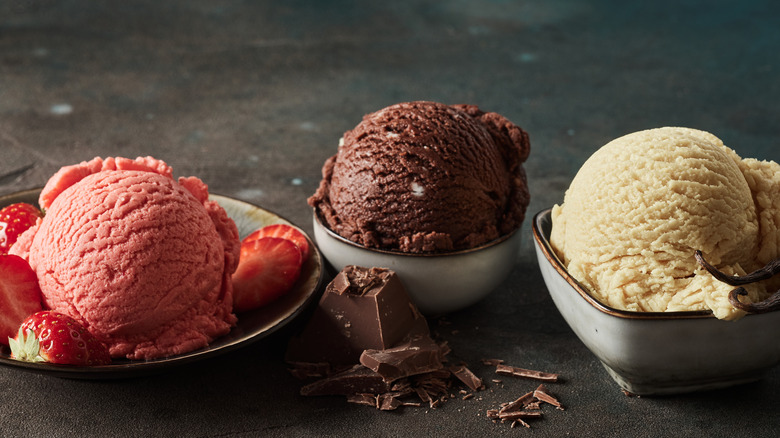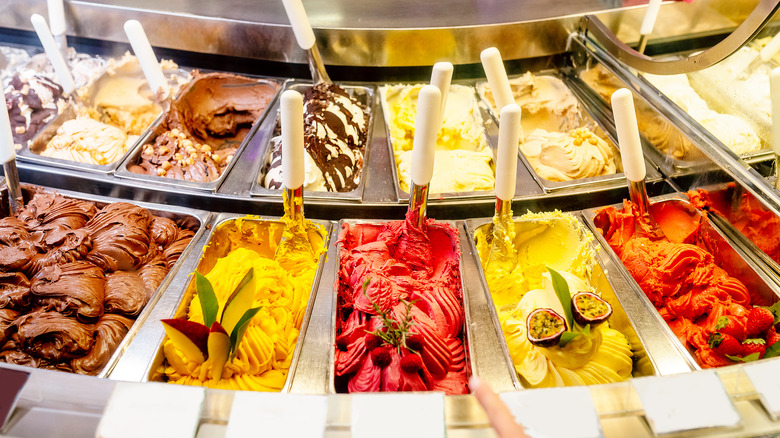The Most Important Thing To Look For When Buying Gelato
If you're craving authentic gelato, you'll probably have to go to Italy to find it. After all, there's a fine art to crafting the frozen dessert food historians believe debuted in 16th-century Italy (via Electrofreeze). Gelato, a derivation of "congelato," the Italian word for frozen, was most likely created in Florence by Bernardo Buontalenti, who introduced the frozen dessert to the court of Catherina dei Medici.
While gelato's popularity spread throughout Italy and then across Europe, it never quite caught on in the United States. According to Electrofreeze, the timing of gelato's arrival in the U.S. in 1770 coincided closely with the invention of the hand-crank ice cream machine. Unfortunately, ice cream stole gelato's limelight before it could get a foothold. But that doesn't mean it's impossible to find authentic gelato in the U.S.
As gelato aficionados well know, there's a definite difference between ice cream and real gelato. Authentic Italian gelato contains significantly less fat than ice cream (via Slice of Tuscany). It's also slow-churned, so it's denser without the fluff factor caused by excess air. Finally, the ideal serving temperature is slightly higher (10 to 22 degrees Fahrenheit, via Dream Scoops) versus (6 to 10 degrees Fahrenheit, via the International Dairy Foods Association) for ice cream, resulting in a more flavor-intense experience.
How to differentiate the good from the bad
Even in Italy, you'll come across copy-cat gelato vendors who cut corners and serve a sub-par product. According to The Local, it's tricky because Italy doesn't regulate the word "artisanal" and there are no rules for using the term "gelato" to describe a frozen dessert; It can apply to the highest-quality authentic gelato and the lowest-quality knock-off.
How do you make sure you're about to dig into a nirvana-inducing frozen dessert and not an icy, flavorless, disappointment? You learn how to tell the difference.
First, and perhaps easiest, assess the color. According to Condé Nast Traveler, the color of artisanal gelato will be subtle. That's because it's all natural, with no artificial coloring added to make, for example, naturally white lemon gelato appear bright yellow. Another hint you're getting the good stuff: A clearly displayed list of ingredients. True artisans take pride in their commitment to only natural ingredients.
Also note how the gelato is displayed. The denser-than-ice cream product requires special care. According to The Local, authentic gelato should be displayed in flat metal tins. If the tins have covers, that's a bonus — it means the vendor is particular about maintaining the proper temperature. Another clue: If the gelato is piled high in the display, you've probably caught a fraud. It's likely the product includes vegetable fats and emulsifiers, two definite no-no's when it comes to artisanal gelato. Finally, note the season. If you're looking at peach gelato in December, it's probably not fresh.

